We used lime mortar in the plinth walls instead of the now standard-practice of using Portland cement. There were a few of reasons for this. First, part of the design brief was that as many of the materials as possible could be reused (if the house were ever demolished). Portland cement has such strong binding properties that bricks and stones tend to bread before the cement does, but lime mortar can be removed and allow the bricks or stones to be reused. But more importantly to our immediate concerns is that we needed the mortar to allow moisture to pass through so that we don’t end up with a buildup of condensation behind the masonry wall.
The principal of building a masonry wall is also that the mortar should be sacrificial – if it deteriorates due to freezing or cracking, it is relatively inexpensive and easy to replace compared with the masonry itself. With Portland cement, due to its strength, the masonry is more likely to crack and break before the mortar.
To prevent the lime mortar from drying too quickly (particularly in direct sunlight), it is necessary to cover it with hessian cloth, sometimes sprayed with water. This allows moisture to pass through, and so the lime mortar to dry. You can see this in some of the photos below. Also visible in the photo of the stone facing on the Peerie Hoose plinth wall are the paving slabs under the masonry wall. These were placed over the trenches which hold the service pipes.

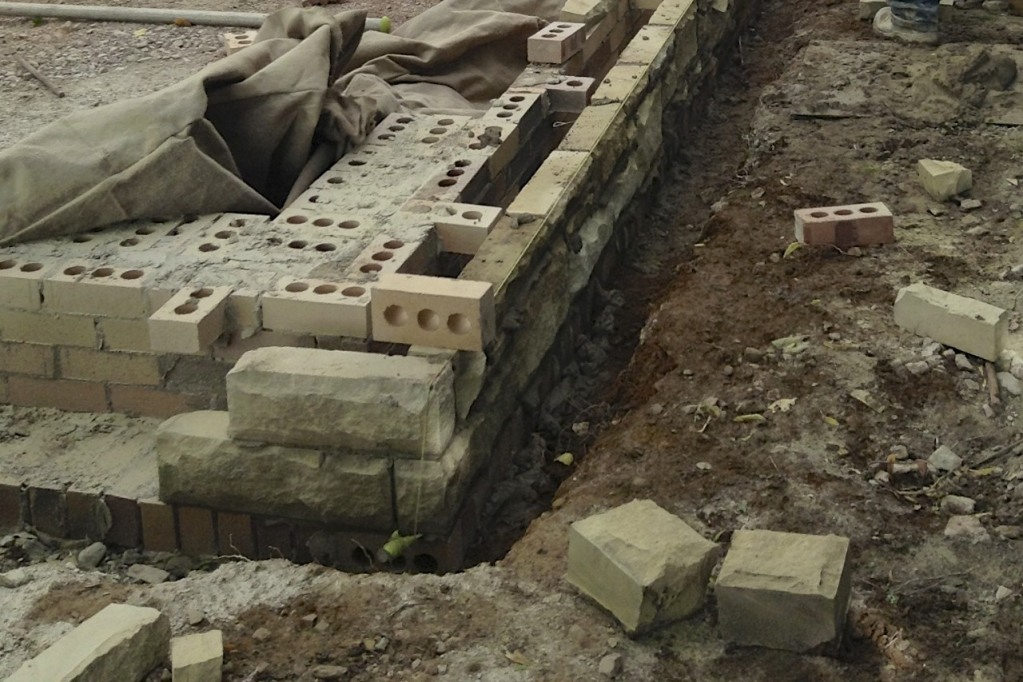
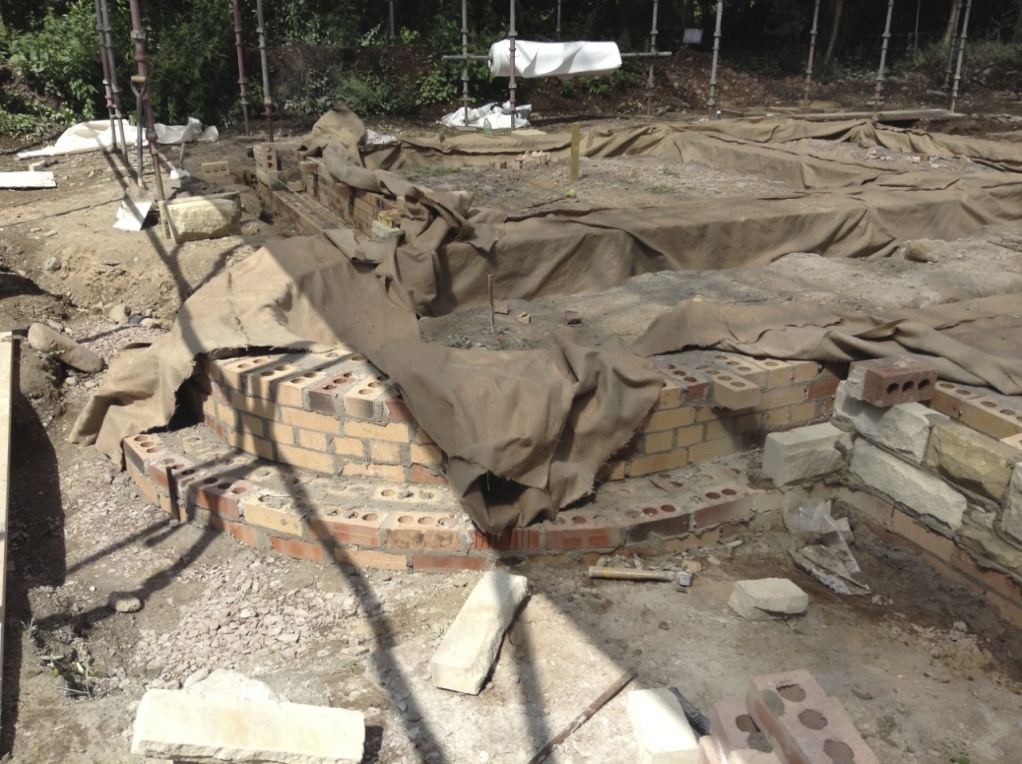
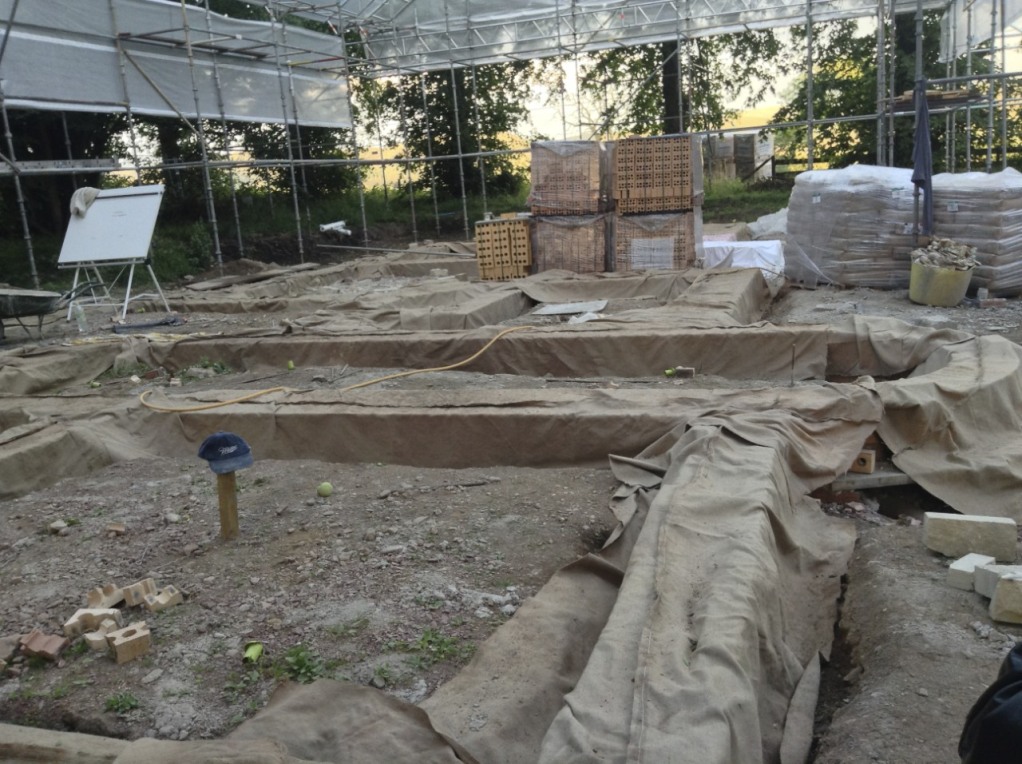

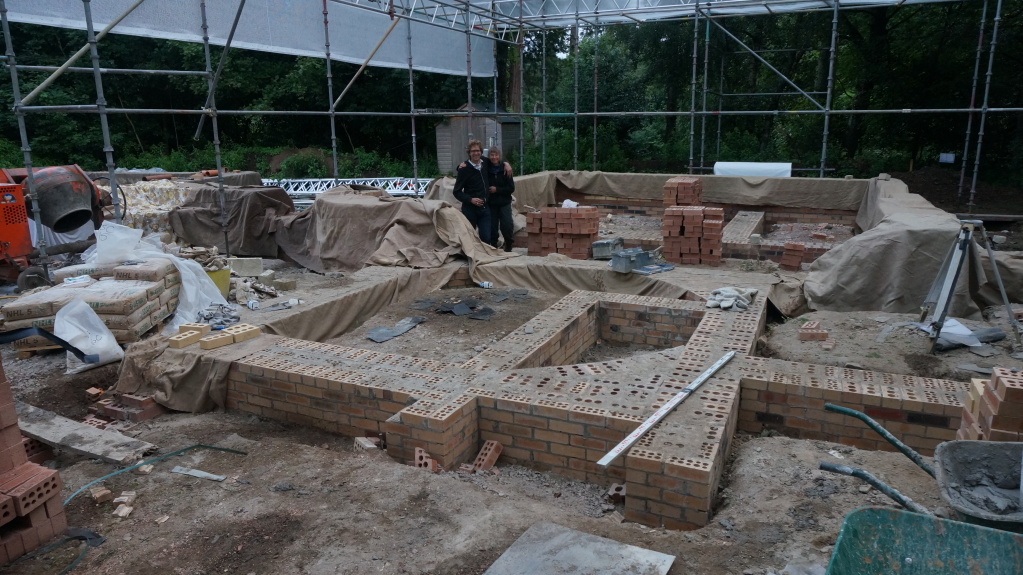

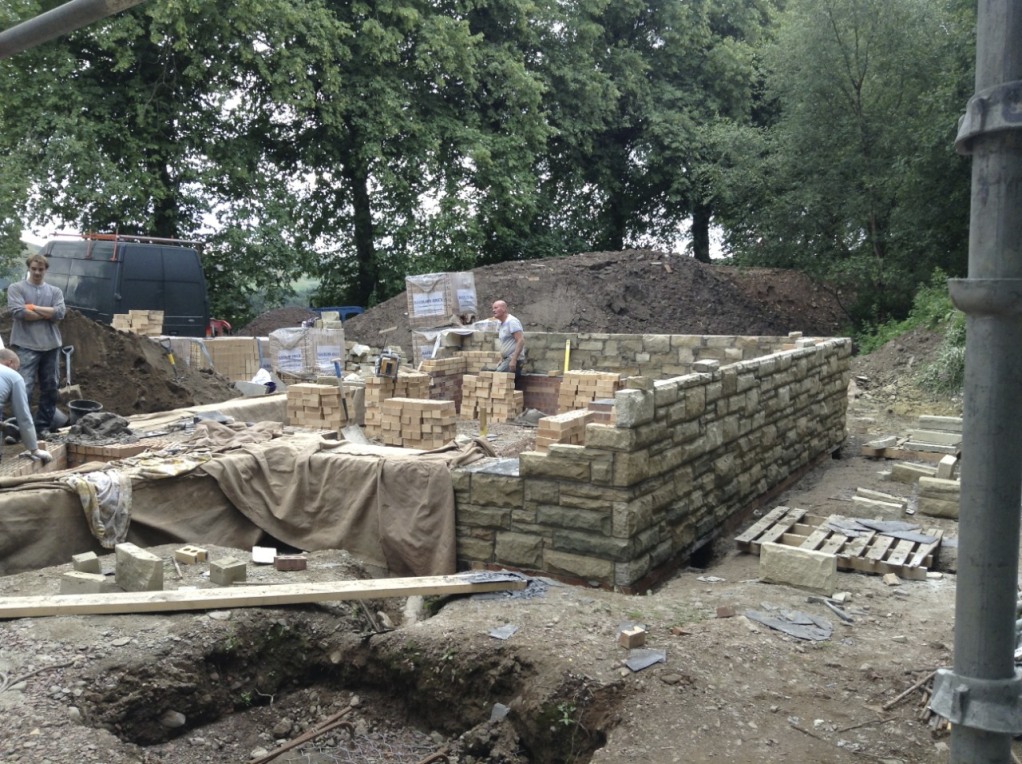

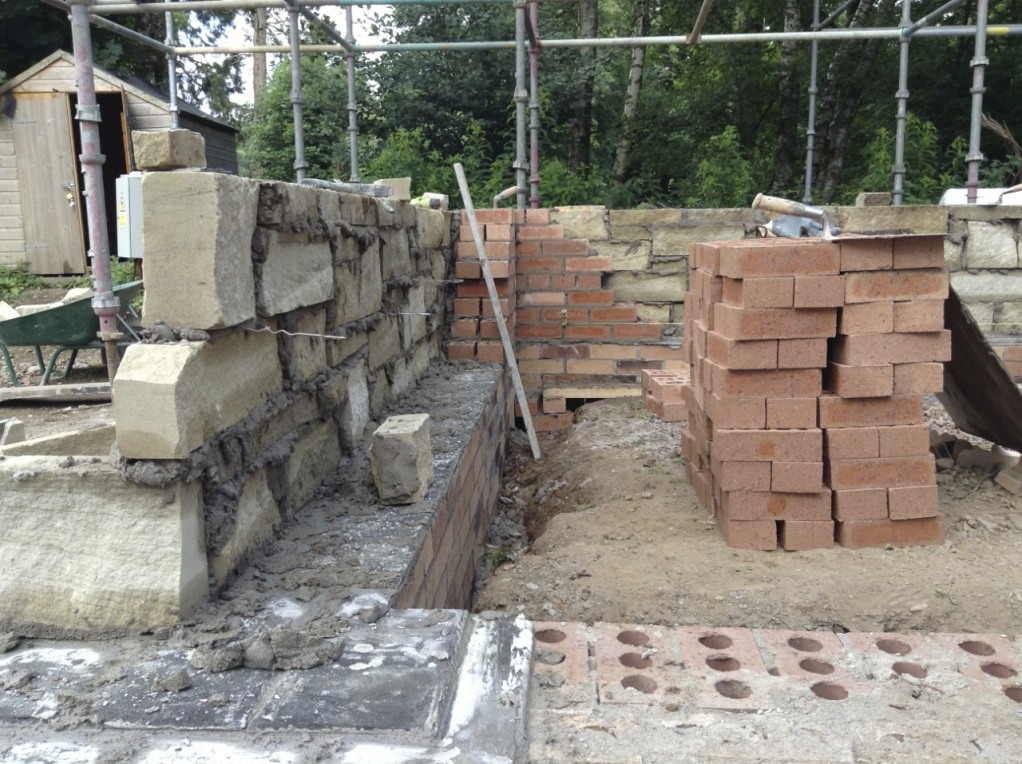
Very interesting. By the way what does ‘Peerie’ mean?
‘Peerie’ means ‘little’ in the Shetland dialect of Scots. I can’t now remember when we decided to call it this, but it was very early in the design process, probably when in or soon after returning from Shetland. 🙂
Nice!